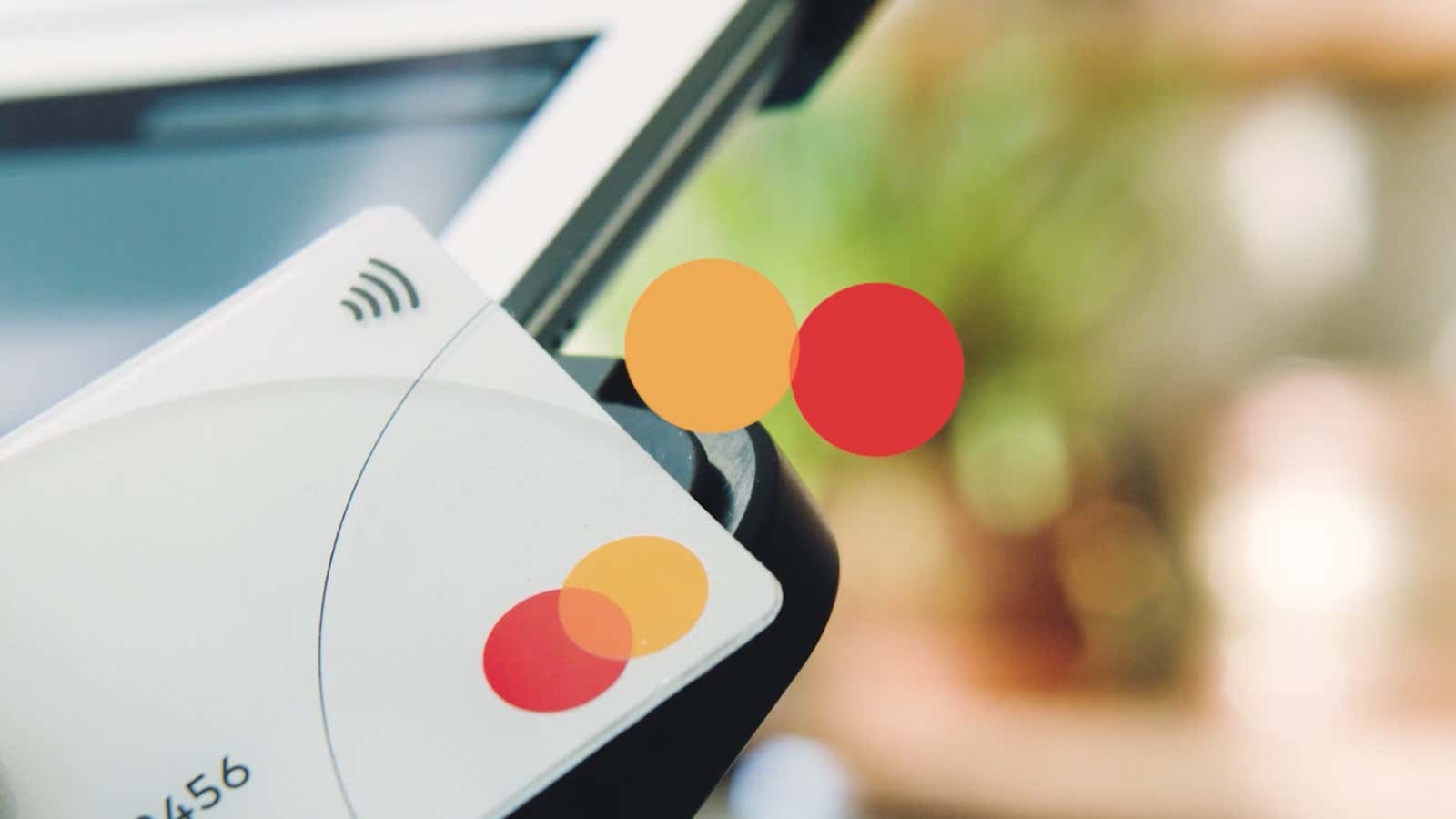Ta-run-tun-ta-run-tun.
That’s the sound of Mastercard’s new “sonic logo.” The 53-year-old financial services corporation is the latest company to venture into audio branding. It’s a strategy that involves creating and protecting an original piece of music to brand products and initiatives, much like a visual mark works on paper.
Mastercard’s peppy six-note tune, which debuted in a commercial aired during the Grammy Awards last Sunday (Feb. 9), plays after every successful credit card transaction. It’s actually a clip from a longer melody that the company developed with artists, musicologists and marketers over the course of two years. From this core 90-second anthem, Mastercard plans to produce ring tones, advertising jingles, call hold music and a spectrum of sounds for various applications. “Sound adds a powerful new dimension to our brand identity,” explains Raja Rajamannar, the company’s chief marketing officer, in a press statement. “[It] is a critical component to how people recognize Mastercard today and in the future.”
Sound logos are particularly useful at the point of sale. At a time when the ka-ching of cash registers has been replaced by silent card swipes and taps or instant mobile payments, confirmation sounds are reassuring for customers, explains Rajamannar. Last year, Visa also introduced a split-second tune for point-of-sale transactions that they say signals “speed, trust and convenience.”
With voice shopping projected to hit the $40 billion mark in three years, it makes sense for companies to think about a signature melody or an “audio calling card,” as Gimlet co-founder Matt Lieber calls it.
“Audio is just a great medium for advertising because it’s personal and it’s all happening in your imagination,” he explains in a recent AdWeek interview. “That creates a sense of memory and affinity that’s hard [to achieve] with a little box on the screen.” A survey conducted by brand specialists PHMG also suggests that 60% of consumers recall tunes played in commercials than they do visuals on a screen. Brands such as Intel, Skype, Coca-Cola, and McDonald’s all boast sticky sound identities.
Even before that, brands have been using catchy radio jingles and advertising slogans as consumer earworms for decades. But distinct from previous generations when radio and TV were dominant, sonic brand identities today are designed for multi-platform consumers hooked on podcasts, music streaming, and smart speakers.
A global sound
Beyond the point-of-sale pings, Mastercard has also adapted its brand melody in various genres. Instead of using one universal tune everywhere (which is how logos typically work), it has commissioned remixes with instruments and beats associated with particular environments.
For instance, note the difference between a version that evokes the languor of Mumbai, versus the jubilant riff meant to convey the energy of Bogotá, Colombia.
Or compare the Mastercard melody sung by opera singers to that of a snappy pop rendition.
Rajamannar says it’s all about context. Rather than impose one signature sound, he explains, Mastercard seeks to sound “native” in various places and mesh with users’ surroundings. “The sound for Tiffany’s will be very different from that of Gamestop,” he explains.
“It’s quite contrarian in many ways,” says Rajamannar. “But music is such that you do not want rigidity in it. The whole idea of branding is to connect with consumers emotionally.”
